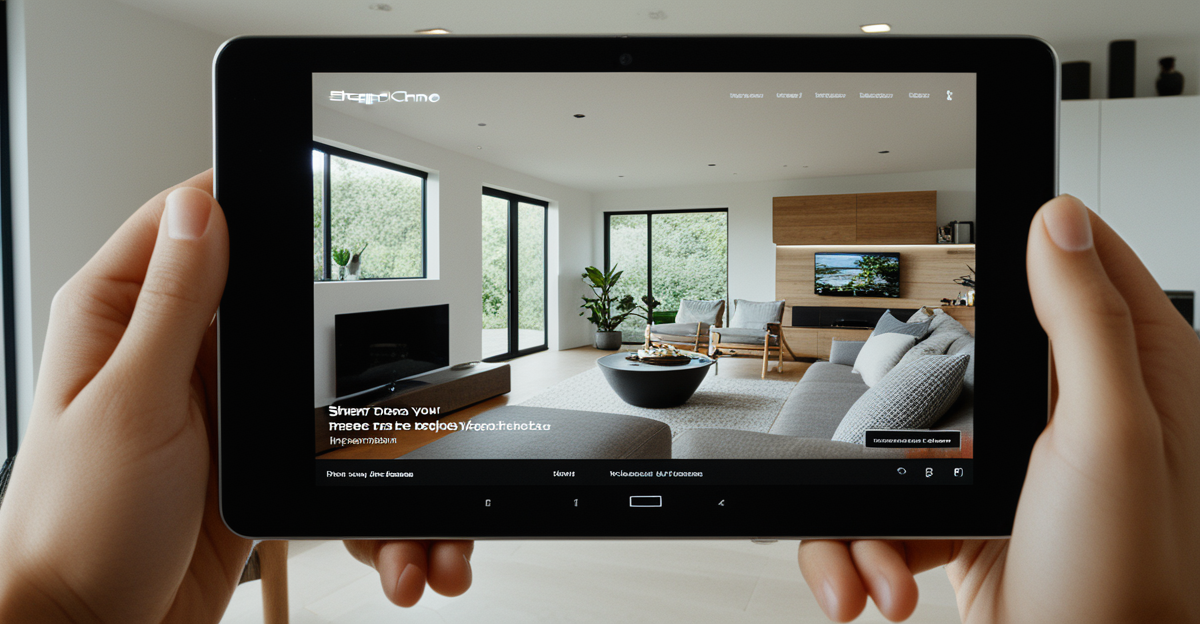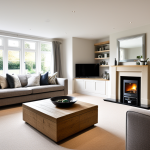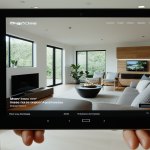Understanding Integrated Home Technology
Integrated home technology refers to the seamless connection of various devices and systems within a residence to create a cohesive, automated environment. At its core, this involves smart home basics such as connected lighting, security, climate control, and entertainment systems working together through centralized control platforms.
Home automation explained means that these devices communicate over networks—often Wi-Fi or specialized protocols—to respond to user commands or preset schedules. This integration simplifies managing multiple gadgets, enabling homeowners to monitor and adjust settings remotely via smartphones or voice assistants.
In parallel : How Can You Enhance the Comfort of Your Home with Simple Decor Changes?
Key components include smart sensors, hubs, and controllers that link devices, ensuring they operate in harmony. For example, a smart thermostat can interact with window sensors to optimize heating or cooling, reducing energy consumption without sacrificing comfort.
Understanding integrated home technology also involves recognizing the importance of device compatibility and communication standards. With many manufacturers adopting common protocols, such as Zigbee or Z-Wave, users enjoy smoother connectivity and easier expansion of their home automation networks.
Also read : How Can You Transform Your UK Home Living Space for Ultimate Comfort?
Overall, embracing integrated home technology means turning isolated smart devices into a unified system, making homes more efficient, responsive, and user-friendly.
Everyday Transformations with Smart Devices
Integrated home technology brings noticeable changes to daily life, especially through smart home devices that automate routine tasks. For instance, smart thermostats learn your schedule and adjust temperatures automatically, enhancing comfort while saving energy. When you leave the house, the thermostat lowers heating or cooling, conserving power without manual input.
Smart lighting systems offer dynamic control, adjusting brightness and color to suit activities or time of day. Imagine lights dimming softly for a movie or brightening as you wake—these responsive setups improve ambiance effortlessly.
Home security is another area transformed by integrated technology. Cameras, motion detectors, and smart locks communicate seamlessly, delivering real-time alerts to your smartphone. This interconnected system allows monitoring your property remotely, bolstering safety and peace of mind.
Even entertainment benefits: smart speakers and streaming devices synchronize to create immersive experiences tailored to your preferences. Voice commands can start your favourite playlist or adjust sound levels in different rooms, making home entertainment more intuitive.
Together, these smart home devices merge convenience with control, demonstrating how integrated home technology enriches everyday living by automating tasks and adapting to your lifestyle.
Tips for Getting Started with Home Integration
Starting with home automation setup can seem daunting, but focusing on getting started smart home basics makes the process manageable. First, identify which daily tasks you want to simplify—whether it’s lighting control, climate management, or security monitoring. Knowing your needs helps narrow down device choices.
Choosing compatible devices is crucial. Not all smart gadgets work seamlessly together; selecting products that support common protocols like Zigbee or Z-Wave ensures smooth integration. For example, pairing a hub that supports multiple standards allows adding various smart home basics without connectivity issues.
Begin simple: start with one or two devices such as a smart thermostat or smart lights, then gradually expand. Setting these up involves connecting devices to a central app or hub, often guided by intuitive instructions. This step-by-step approach builds confidence and prevents overwhelm.
Common challenges include compatibility conflicts and network limitations. To overcome these, check device specifications beforehand and ensure your Wi-Fi is strong throughout the home. Also, consider devices known for user-friendly interfaces and reliable updates.
By following these tips, homeowners can confidently embrace integrated home technology, turning automation concepts into practical everyday improvements.
Key Benefits of Integrated Technology in the Home
Integrated home technology offers significant advantages in home efficiency and convenience. By automating routine tasks, residents save time and reduce manual effort. For example, coordinating smart lighting and thermostats means your home adjusts automatically to your presence and preferences, streamlining daily living.
Energy savings are a major benefit. Smart thermostats and sensors optimize heating and cooling by reacting to real-time conditions, preventing wasted energy. This not only lowers utility bills but also contributes to sustainability goals by reducing carbon footprints.
Safety enhancements are another critical feature. Integrated systems combine smart locks, cameras, and motion detectors, providing continuous monitoring and instant alerts to homeowners. This integration raises security levels, allowing quick responses to unusual activity and creating greater peace of mind.
Overall, these smart living benefits transform houses into responsive, efficient spaces. The synergy of convenience, savings, and safety makes integrated home technology a practical investment for modern lifestyles.
Emerging Trends and the Future of Smart Homes
The landscape of integrated home technology is rapidly evolving with remarkable smart home trends shaping the way we live. One significant advance is the rise of predictive home automation—systems that learn your habits and adjust settings proactively. For example, a smart thermostat may anticipate your arrival based on your phone’s location, optimizing temperature without any manual input.
Another key trend is enhanced personalization. Future home technology aims to tailor experiences not just by room but by individual preferences, adapting lighting, sound, and climate to each family member’s comfort. This requires deeper integration between devices and improved data analysis, pushing home automation beyond basic control into an intuitive assistant role.
Connectivity improvements also drive progress. Emerging standards and mesh networks promise more reliable communication among devices, reducing lag and expanding smart home capabilities. Additionally, voice assistants are becoming more context-aware, enabling natural, conversational commands that make managing multiple smart devices seamless.
As advancements in home automation continue, the focus will shift to increasing interoperability and security, ensuring smart homes remain user-friendly while protecting residents’ privacy. These innovations herald a future where living spaces respond dynamically to our needs, highlighting the potential of truly integrated home technology.







